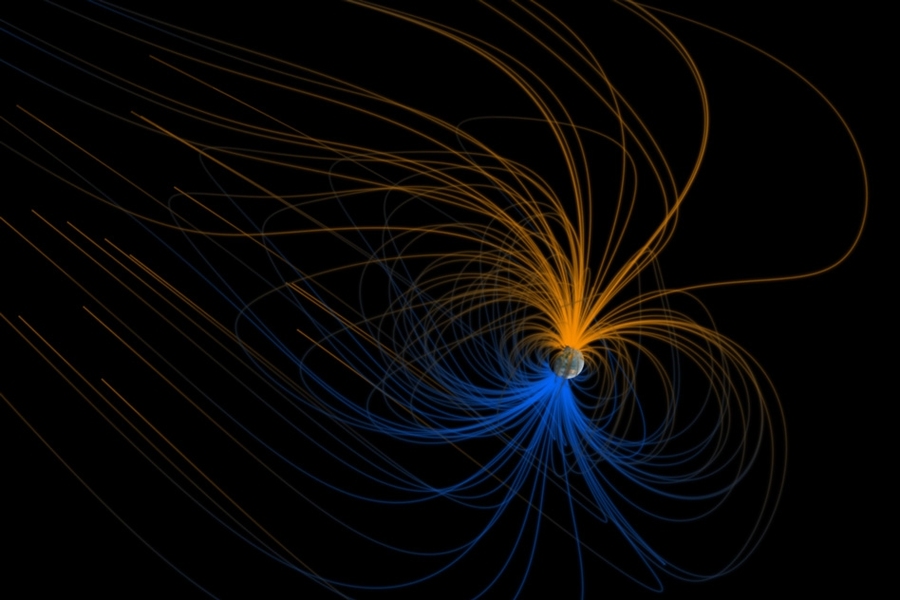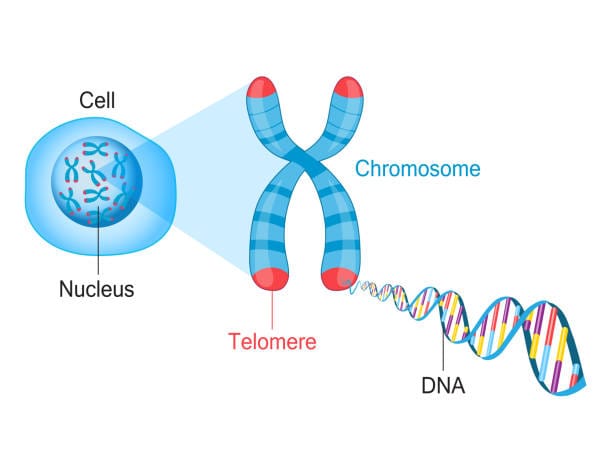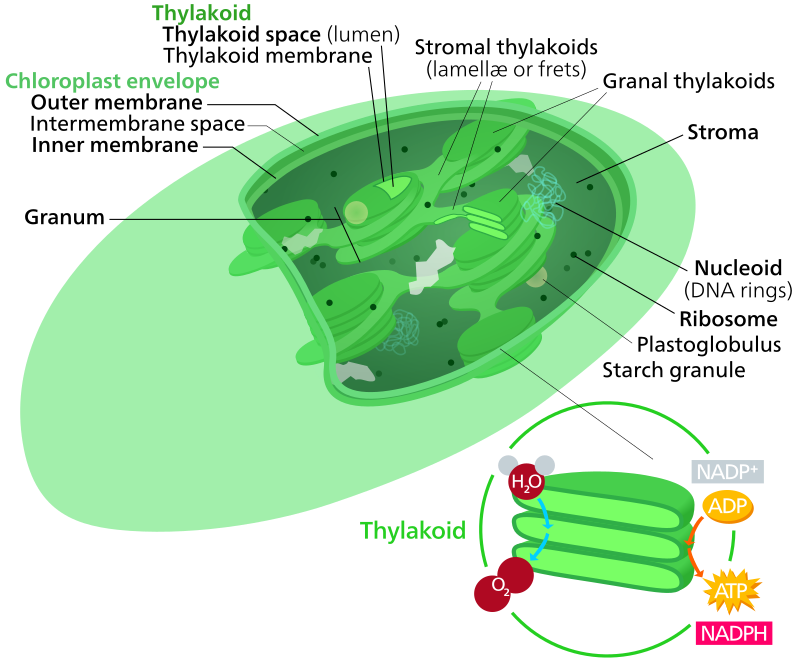It’s easy to take Earth for granted. The blue skies, the gentle winds, the warm sunrays that grace our skin every morning—these gifts feel so natural, so inevitable, that we rarely question what makes them possible. But far beneath our feet, deep in the molten heart of our planet, something extraordinary is happening. It is silent, invisible, and ancient. And yet, without it, life on Earth might never have existed.
This invisible force is Earth’s magnetic field—a planetary armor forged by fire and motion. You can’t see it. You can’t touch it. But it is always there, protecting you, me, and every living thing from dangers most of us don’t even know exist. Earth’s magnetic field is one of the most crucial, unsung heroes of life as we know it. And its story is a breathtaking journey through deep time, cosmic chaos, and delicate biological evolution.
A Dance of Liquid Metal and Magnetism
To understand the magnetic field, we must journey into the center of the Earth. Here lies a blazing core of iron and nickel, hotter than the surface of the Sun. The core is split into two layers: a solid inner core and a swirling, liquid outer core. It is this molten outer core that sets the stage for Earth’s magnetic drama.
As the Earth spins on its axis, the molten metal in the outer core moves in complex, turbulent patterns. This movement generates electric currents, and those currents, in turn, create magnetic fields. The process is called the geodynamo, and it has been churning away for at least 3.5 billion years.
Imagine it as a colossal dynamo buried thousands of kilometers below the crust, a planetary engine of swirling metal and electromagnetic power. The field it generates extends far beyond our atmosphere, forming a vast protective bubble called the magnetosphere. This invisible force field surrounds the planet like a cocoon, shielding it from cosmic harm.
But what exactly does it protect us from? Why is it so critical to life?
The Cosmic Assault: Solar Wind and Radiation
Space is not a calm, quiet void. It is a battleground of forces and fury. One of the greatest threats comes from our own star—the Sun. As much as it gives life, it also unleashes deadly streams of high-energy particles. This torrent, known as the solar wind, blasts through the solar system at speeds of up to a million miles per hour.
These solar particles carry enough energy to strip away the atmosphere of a planet and irradiate its surface. Without protection, a planet’s water could evaporate, its skies could be ripped away, and any organic molecules—let alone complex life—could be obliterated by radiation.
Now consider this: every second of every day, Earth is bombarded by this solar wind. Yet we remain safe, nestled under a shroud of blue skies and breathable air. The reason? Earth’s magnetic field deflects most of these dangerous particles. Like a shield, the magnetosphere channels the solar wind around the planet, preventing it from penetrating the atmosphere and reaching the ground.
If that shield were to disappear, the consequences would be catastrophic.
A Tale of Two Planets: Mars and Earth
To truly grasp the importance of Earth’s magnetic field, look no further than our celestial neighbor—Mars. Once, Mars may have had rivers, lakes, even oceans. It had an atmosphere and a climate that could have supported life. But today, the Red Planet is a cold, arid desert with an atmosphere a hundred times thinner than Earth’s.
What happened?
One leading theory suggests that Mars lost its magnetic field early in its history. Without that shield, the solar wind bombarded the planet relentlessly. Over millions of years, it stripped away the Martian atmosphere, eroded its climate, and sterilized its surface. Whatever potential for life it had, it lost.
Mars is a haunting reminder of what could happen to Earth if our magnetic field failed.
Auroras: The Beauty of Collision
Not all interactions between the magnetic field and solar particles are dangerous. Sometimes, they create beauty so powerful, it seems otherworldly. When charged particles from the Sun breach the magnetosphere near the poles, they spiral down magnetic field lines and collide with molecules in the upper atmosphere. These collisions release energy in the form of light, creating shimmering curtains of green, red, purple, and blue.
These are the auroras—aurora borealis in the north, aurora australis in the south. They are the glowing fingerprints of Earth’s magnetic field. Every time we gaze upon them, we’re witnessing the cosmic ballet of solar wind and magnetism. They are not just beautiful; they are visible proof that the shield is working.
Biology and Magnetism: A Deeper Connection
Earth’s magnetic field doesn’t just protect the planet physically. It may also shape life in ways we’re only beginning to understand. Many species—birds, sea turtles, whales, even certain bacteria—appear to sense Earth’s magnetic field and use it to navigate across vast distances.
This phenomenon, known as magnetoreception, is still mysterious. Scientists believe that specialized proteins like cryptochromes, found in the eyes of some animals, may help detect magnetic fields. Others think tiny magnetic particles in cells act like internal compasses. Either way, the magnetic field is woven into the very fabric of life’s behavior.
Even human biology may be subtly influenced. While we don’t consciously sense the magnetic field, some studies suggest that our circadian rhythms and sleep patterns might be sensitive to changes in geomagnetic activity. It’s a realm of science still full of questions, but one thing is clear: life evolved not in spite of Earth’s magnetic field, but alongside it.
Magnetic Reversals: When the Poles Flip
The magnetic field isn’t static. Over geological time, it has flipped—completely. North becomes south, and south becomes north. These magnetic reversals happen irregularly, every few hundred thousand years. The last full reversal occurred about 780,000 years ago.
During a reversal, the magnetic field weakens and becomes more complex, with multiple north and south poles appearing simultaneously. While this might sound apocalyptic, the fossil record shows that reversals haven’t caused mass extinctions. Life persisted through them, and our planet’s protective shield never fully vanished.
But a weakened field during reversal could allow more radiation to reach the surface, potentially affecting satellites, electrical grids, and even animal navigation. Understanding these reversals is critical not just for science, but for preparing our technology-dependent civilization for future changes.
Earth’s Inner Heartbeat: Keeping the Field Alive
The secret to Earth’s magnetic longevity lies in its core. Unlike Mars, whose smaller size allowed its interior to cool and solidify too quickly, Earth retains enough heat to keep its core molten and moving. The radioactive decay of elements like uranium and thorium adds to this heat, driving the geodynamo that sustains the field.
This dynamic system means that as long as Earth’s core keeps churning, the magnetic field will endure. But it’s not guaranteed forever. Billions of years from now, as the planet cools, the core may solidify completely, and the field could fade. Long after humanity is gone, Earth may lose its invisible guardian. But for now, it remains our silent sentinel.
Magnetism in the Age of Satellites
In the modern world, Earth’s magnetic field plays a critical role beyond biology and geology. It protects the satellites that orbit above us—those fragile sentinels responsible for GPS navigation, weather forecasting, and global communication. Without the magnetic field, these satellites would be far more vulnerable to solar storms and cosmic radiation.
When powerful solar flares erupt from the Sun, they can send waves of charged particles crashing into the magnetosphere. This can cause geomagnetic storms that disrupt radio signals, overload power grids, and even damage spacecraft electronics. In 1989, a solar storm caused a blackout across Quebec, plunging millions into darkness.
Understanding and monitoring the magnetic field has become a priority for space weather prediction. Agencies like NASA and ESA continuously observe its changes using sophisticated satellites. It’s a reminder that in the digital age, magnetism still matters as much as ever.
A Fragile Shield, A Delicate Balance
In recent decades, scientists have observed that Earth’s magnetic field is slowly weakening—particularly over a region known as the South Atlantic Anomaly. This area, stretching from South America to southern Africa, experiences a weaker magnetic field, making satellites more vulnerable to radiation when passing through.
Though some fear this signals an impending reversal, the truth is more nuanced. Magnetic field strength naturally fluctuates, and reversals take thousands of years. What matters is not panic, but preparedness and research.
The weakening of the field also serves as a poignant reminder of our planet’s fragility. Like climate, biodiversity, and water, the magnetic field is part of the finely tuned system that makes Earth habitable. We cannot see it, but we depend on it every moment of our lives.
The Mystery and Majesty of Earth’s Shield
In the end, the story of Earth’s magnetic field is more than just a tale of physics or geology. It is a story of survival, of cosmic forces tamed by planetary motion. It is the quiet heartbeat of the Earth, pulsing beneath our feet and stretching into the heavens.
It guards our dreams, our civilizations, our future. It paints the skies with auroras and guides creatures through the darkness. It links the fire in Earth’s core to the cold of interstellar space in an unbroken chain of cause and effect.
And perhaps most remarkably, it does all this without us noticing.
Yet the next time you watch the northern lights dance across the sky, or navigate using your smartphone, or simply breathe the air in your lungs, remember the unseen field that makes it all possible. In a universe filled with chaos and radiation, Earth’s magnetic field is a miracle of physics—a gift of nature that has made life not just possible, but sustainable.
It is the silent shield, the invisible architect of life’s sanctuary. And it is, without question, one of the greatest reasons we are here at all.






